
Cape Town is one of South Africa's three capital cities, serving as the seat of the Parliament of South Africa. It is the legislative capital of the country, the oldest city in the country, and the second largest. Colloquially named the Mother City, it is the largest city of the Western Cape province, and is managed by the City of Cape Town metropolitan municipality. The other two capitals are Pretoria, the executive capital, located in Gauteng, where the Presidency is based, and Bloemfontein, the judicial capital in the Free State, where the Supreme Court of Appeal is located.

Chief Dawid Stuurman International Airport is an airport serving Port Elizabeth (Gqeberha), a city in the Eastern Cape province in South Africa. It was formerly known as H. F. Verwoerd Airport and Port Elizabeth International Airport. The airport is owned and operated by the Airports Company South Africa which also operates nine other airports around South Africa. The airport is located approximately two miles south of the city's central business district. In 2017, the airport served 1,620,705 passengers.
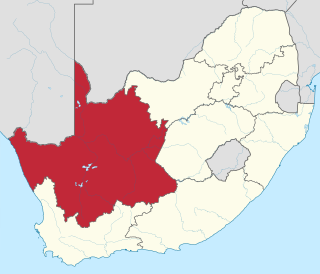
The Northern Cape is the largest and most sparsely populated province of South Africa. It was created in 1994 when the Cape Province was split up. Its capital is Kimberley. It includes the Kalahari Gemsbok National Park, part of the Kgalagadi Transfrontier Park and an international park shared with Botswana. It also includes the Augrabies Falls and the diamond mining regions in Kimberley and Alexander Bay.
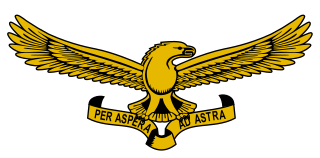
The South African Air Force (SAAF) is the air warfare branch of South African National Defence Force, with its headquarters in Pretoria. The South African Air Force was established on 1 February 1920. The Air Force saw service in World War II and the Korean War. From 1966, the SAAF was involved in providing infantry support in the low-intensity Border War in Angola, South-West Africa and Rhodesia. As the war progressed, the intensity of air operations increased, until in the late 1980s when the SAAF were compelled to fly fighter missions against Angolan aircraft in order to maintain tactical air superiority. On conclusion of the Border War in 1990, aircraft numbers were severely reduced due to economic pressures as well as the cessation of hostilities with neighbouring states.

The South African Special Forces Brigade, colloquially known as the Recces, is South Africa's principal special operations unit, specialising in various types of operations including; counter-insurgency, long-range-reconnaissance, unconventional-warfare, special operations, hostage-rescue, and direct-action operations. The brigade operates with two active-duty groups, with 4 Special Forces Regiment focusing on maritime operations, and 5 Special Forces Regiment focusing on land and airborne operations. Only about 8% of recruits who undergo South African special forces training pass the course.
The following lists events that happened during 1999 in South Africa.
The following lists events that happened during 2000 in South Africa.
The following lists events that happened during 2004 in South Africa.
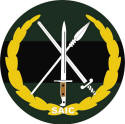
The South African Army Infantry Formation supervises all infantry within the South African Army.

Griquas are a South African rugby union team that participates in the annual Currie Cup tournament. Their home ground is Griqua Park in Kimberley and they draw their players mostly from Northern Cape Province. They have won the Currie Cup three times – in 1899, 1911 and 1970 – and the Vodacom Cup a joint-record five times.

Vredendal is a town in the northern Olifants River Valley in the Western Cape province of South Africa, with a population of 16,164 people. It is situated 250 kilometres (160 mi) north of Cape Town on the banks of the Olifants River at the southern edge of Little Namaqualand.

The Leliefontein massacre occurred on 31 January 1902 during the South African War at the Leliefontein Methodist mission station in the Northern Cape, South Africa.
Leliefontein may refer to:

The Kamiesberg or Kamiesberge, is a mountain range of jumbled granite inselbergs or bornhardts dotted over sandy plains and centered on Kamieskroon in Namaqualand in South Africa. This range is very like the Matopos of Zimbabwe in appearance. It stretches for about 140 km (60 mi) from Garies in the south to Springbok in the north and forms a plateau between the Sandveld of the Cape West Coast and Bushmanland in the east, with the Hardveld of the mountainous central Kamiesberg escarpment in the midst.
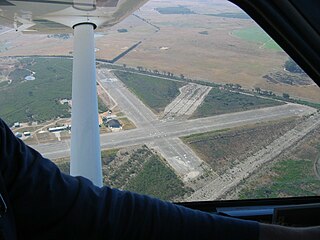
Cape Winelands Airport is an ex-South African Air Force airfield built circa 1943, and used to operate Lockheed Ventura bombers. It is located approximately 13 kilometres (8.1 mi) northeast of Durbanville It has been in private ownership since 1993.
The Northern Cape Heritage Resources Authority, previously called Ngwao Boswa jwa Kapa Bokone, and commonly known as 'Boswa', is a provincial heritage resources authority established in 2003 by the MEC for Sport, Arts and Culture in the Northern Cape Province of South Africa, and reconstituted in terms of the Northern Cape Heritage Resources Authority Act, 2013. It is an institution set up under the terms of the National Heritage Resources Act. It is mandated to care for that part of South Africa's national estate that is of provincial and local significance in the Northern Cape.
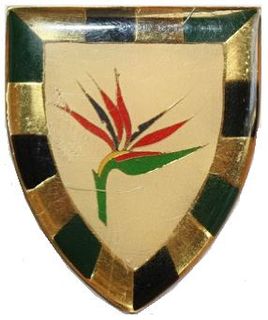
6 South African Infantry Battalion is an air assault infantry unit of the South African Army.
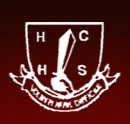
Harold Cressy High School is a secondary school in District Six of Cape Town in South Africa. It was founded in January 1951 as the Cape Town Secondary School. The school has played a substantial role in South African history during the apartheid period and the building is identified as an important landmark.

Eastern Province Command was a command of the South African Army.

Margaret Lawder (1900-1983) was an Irish and South African botanist known for her conservation work. In 1922, at the age of 22, she emigrated to the Cape of Good Hope with her husband Commander Edward Francis Lawder R.N. and they became official plant collectors for the Kirstenbosch National Botanical Garden in Cape Town. Edward took pictures of the flowers and Margaret wrote the descriptions of them.


















